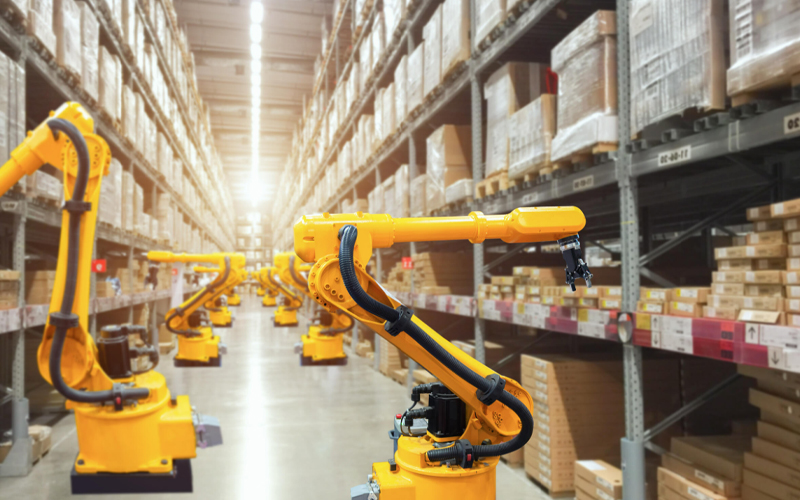In an age of extraordinary ecological challenges, the union of artificial intelligence (AI) and climatology is emerging as a beacon of hope. Given the broad spectrum of available AI tools, the use of generative AI in climate science is gaining traction for its transformative capacity in environmental modelling and impact prediction.
In this blog we will explore the possibilities and advantages of using generative AI in resolving the complexities of climate change.
Unravelling nature’s complexity
Our planet is a complex system of interconnected ecosystems. In this sophisticated yet intricate network, a small change in one part of the biosphere can have magnified impacts on others. Traditional modelling has struggled to capture all these intricacies at once, limiting our understanding of ecology.
The role of generative AI in climate modelling and prediction impact
Generative AI’s ability to analyse massive datasets to identify patterns is a technological marvel. Given the size of the challenge at hand, generative AI is a formidable ally in learning from historical data and generating predictive models. It simulates complex environmental scenarios, including biodiversity patterns and climate dynamics, giving researchers and decision-makers an unprecedented view of environmental changes. Here is some ways AI in climate is supporting us:
- Mitigation
- Adaptation
- Monitoring and detection
Generative AI helps reduce greenhouse gas emissions by optimising distributed energy resources management systems, integrating renewable energy into traditional systems, upgrading carbon capture technologies, and improving transport systems. Through real-time generation of supply-demand gaps and the design of effective technologies, AI plays a crucial role in helping us reduce our carbon footprint.
While we can minimise our carbon footprint, complete elimination is not feasible, making adaptation essential. AI plays a versatile role in planning and readiness for changes in our climatic conditions. For example, simulations on climate-resilient agricultural practices can ensure long-term food security.
Enhanced abilities to analyse and interpret data using algorithms, such as large language models, enable us to monitor the large-scale impacts of climate change at the touch of a button. Geographic information systems and satellites use these AI algorithms to effectively track real-time changes, providing crucial information about the rate of climate change. Examples include monitoring glacier retreats and detecting changes in freshwater levels and fish populations globally.
The impacts of climate change are far-reaching. Across supply chains and operations, not to forget a changing consumer landscape, the business ecosystem is rethinking its strategy to keep up with a global level change. The impact of climate change on business is a serious threat to the global economic system, presenting a formidable challenge to industrial output and productivity. Extreme weather events are damaging physical infrastructure and disrupting operations, which is leading to production delays, inventory loss, labour shortages, and ultimately revenue forfeiture. Such multifaceted complexities demand urgent answers. Generative AI for climate is paving the way to a sustainable future.
Case studies: Real-world applications of generative AI in climate science
Generative AI is not just theoretical; its real-world applications are already making significant impacts. Here are some notable examples:
- Renewable energy management
- Urban planning and smart cities
- Agricultural practices
AI models have optimised the deployment of solar panels and wind turbines by predicting weather patterns and energy demand. For instance, Google’s DeepMind has used AI to predict wind power output 36 hours ahead, leading to a 20% increase in the value of wind energy.
AI is aiding in the development of smart cities by analysing data on traffic patterns, energy consumption, and pollution levels. This helps create urban environments that are more sustainable and resilient to climate change.
AI-driven simulations have been used to develop climate-resilient agricultural practices. For example, IBM’s Watson AI has been employed to provide farmers with predictive insights on crop yields and soil health, enabling more sustainable farming practices.
Climate change is a systemic risk to the economy. To minimise this risk, generative AI algorithms are providing detailed insights into ecological opportunities as well as risks. This empowers businesses to make informed decisions towards achieving their sustainable development goals. From urban planning, developing resilient transportation systems, forestry, and re-forestry to healthcare, building homes, food security, and better quality of life, generative AI for climate is enabling businesses to navigate complex trade-offs and embrace sustainable development.
Generative AI for business is a formidable force in implementing sustainable solutions to the changing climate. Harnessing the power of machine learning and data analytics, researchers, policymakers, and businesses are gaining deep insights into our planet’s biosphere and developing strategies in tune with the present and the future. Stakeholders are harnessing the potential of generative AI with collaboration and a shared commitment to responsible consumption and production (SDG 12). With continued and consistent efforts, we are charting the course towards a resilient and sustainable world.
How can Infosys BPM help?
The Infosys Generative AI business operations platform is a suite of tailor-made, ready-to-use BPM-focused solutions and responsible design frameworks. A key part of Infosys Topaz, an AI-first set of services, solutions, and platforms using generative AI technologies, the platform enables enterprises to accelerate value creation and lead the generative evolution.








